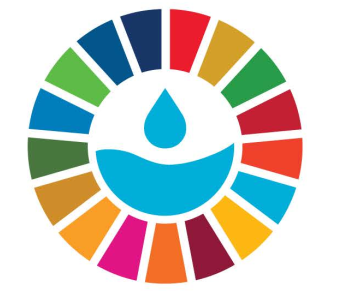ECO SOLUTION RESEARCH
ECO SOLUTION RESEARCH
(
Other relevant actor
)
#SDGAction50638
Description
ECO SOLUTION RESEARCH | A company profile Eco Solution Research was established in March 2016 with the support of UNICEF Innovation Labs. In the period 2016-2021, it has been engaged in projects only in the research part, while from March 2022 it is also developing as an enterprise / start-up and intends to enter the market. All research is based on the concepts of sustainability, reproduction and eco-industries, with particular emphasis on the 2030 Agenda and the Sustainable Development Goals. Eco Solution Research the concept of our business focuses on recycling, recycling and reproduction. In this special focus there is the treatment of Waste Water with an impact on the preservation of Water Resources. Taking into account the lack of drinking water, we as Eco Solution are motivated towards conservation of water resources by treating sewage and increasing the level of this treatment in developing countries.
Global warming has a direct impact on water resources in the globe. Every action in the framework of reducing the emission of greenhouse gases consequently also affects water resources. Our main focus is on the treatment of black water in all forms. A great reuse of water can also be from the water that is released from food waste, considering that 70% of food contains water, the amount that can be generated by this process is beneficial for water resources. In this form, we can also have an impact on the release of greenhouse gases during the process of food waste decomposition, soil conservation from groundwater contamination. Such a process should be implemented in all countries to have the greatest impact.
In our activity, the collaborators are both governmental and business ones.
SDGS & Targets
Goal 6
Ensure availability and sustainable management of water and sanitation for all
6.1
By 2030, achieve universal and equitable access to safe and affordable drinking water for all
6.1.1
Proportion of population using safely managed drinking water services
6.2
By 2030, achieve access to adequate and equitable sanitation and hygiene for all and end open defecation, paying special attention to the needs of women and girls and those in vulnerable situations
6.2.1
Proportion of population using (a) safely managed sanitation services and (b) a hand-washing facility with soap and water
6.3
By 2030, improve water quality by reducing pollution, eliminating dumping and minimizing release of hazardous chemicals and materials, halving the proportion of untreated wastewater and substantially increasing recycling and safe reuse globally
6.3.1
Proportion of domestic and industrial wastewater flows safely treated
6.3.2
Proportion of bodies of water with good ambient water quality
6.4
6.4.1
Change in water-use efficiency over time
6.4.2
Level of water stress: freshwater withdrawal as a proportion of available freshwater resources
6.5
By 2030, implement integrated water resources management at all levels, including through transboundary cooperation as appropriate
6.5.1
Degree of integrated water resources management
6.5.2
Proportion of transboundary basin area with an operational arrangement for water cooperation
6.6
6.6.1
Change in the extent of water-related ecosystems over time
6.a
6.a.1
Amount of water- and sanitation-related official development assistance that is part of a government-coordinated spending plan
6.b
Support and strengthen the participation of local communities in improving water and sanitation management
6.b.1
Proportion of local administrative units with established and operational policies and procedures for participation of local communities in water and sanitation management
Goal 7
Ensure access to affordable, reliable, sustainable and modern energy for all
7.1
By 2030, ensure universal access to affordable, reliable and modern energy services
7.1.1
Proportion of population with access to electricity
7.1.2
Proportion of population with primary reliance on clean fuels and technology
7.2
7.2.1
Renewable energy share in the total final energy consumption
7.3
7.3.1
Energy intensity measured in terms of primary energy and GDP
7.a
7.a.1
International financial flows to developing countries in support of clean energy research and development and renewable energy production, including in hybrid systems
7.b
By 2030, expand infrastructure and upgrade technology for supplying modern and sustainable energy services for all in developing countries, in particular least developed countries, small island developing States, and land-locked developing countries, in accordance with their respective programmes of support
7.b.1
Installed renewable energy-generating capacity in developing and developed countries (in watts per capita)
Goal 15
Protect, restore and promote sustainable use of terrestrial ecosystems, sustainably manage forests, combat desertification, and halt and reverse land degradation and halt biodiversity loss
15.1
By 2020, ensure the conservation, restoration and sustainable use of terrestrial and inland freshwater ecosystems and their services, in particular forests, wetlands, mountains and drylands, in line with obligations under international agreements
15.1.1
15.1.2
15.2
By 2020, promote the implementation of sustainable management of all types of forests, halt deforestation, restore degraded forests and substantially increase afforestation and reforestation globally
15.2.1
15.3
By 2030, combat desertification, restore degraded land and soil, including land affected by desertification, drought and floods, and strive to achieve a land degradation-neutral world
15.3.1
15.4
By 2030, ensure the conservation of mountain ecosystems, including their biodiversity, in order to enhance their capacity to provide benefits that are essential for sustainable development
15.4.1
15.4.2
15.5
Take urgent and significant action to reduce the degradation of natural habitats, halt the loss of biodiversity and, by 2020, protect and prevent the extinction of threatened species
15.5.1
15.6
Promote fair and equitable sharing of the benefits arising from the utilization of genetic resources and promote appropriate access to such resources, as internationally agreed
15.6.1
15.7
Take urgent action to end poaching and trafficking of protected species of flora and fauna and address both demand and supply of illegal wildlife products
15.7.1
15.8
By 2020, introduce measures to prevent the introduction and significantly reduce the impact of invasive alien species on land and water ecosystems and control or eradicate the priority species
15.8.1
15.9
By 2020, integrate ecosystem and biodiversity values into national and local planning, development processes, poverty reduction strategies and accounts
15.9.1
(a) Number of countries that have established national targets in accordance with or similar to Aichi Biodiversity Target 2 of the Strategic Plan for Biodiversity 2011–2020 in their national biodiversity strategy and action plans and the progress reported towards these targets; and (b) integration of biodiversity into national accounting and reporting systems, defined as implementation of the System of Environmental-Economic Accounting
15.a
Mobilize and significantly increase financial resources from all sources to conserve and sustainably use biodiversity and ecosystems
15.a.1
(a) Official development assistance on conservation and sustainable use of biodiversity; and (b) revenue generated and finance mobilized from biodiversity-relevant economic instruments
15.b
Mobilize significant resources from all sources and at all levels to finance sustainable forest management and provide adequate incentives to developing countries to advance such management, including for conservation and reforestation
15.b.1
(a) Official development assistance on conservation and sustainable use of biodiversity; and (b) revenue generated and finance mobilized from biodiversity-relevant economic instruments
15.c
Enhance global support for efforts to combat poaching and trafficking of protected species, including by increasing the capacity of local communities to pursue sustainable livelihood opportunities
15.c.1
SDG 14 targets covered
| Name | Description |
|---|
Deliverables & Timeline
Waste water treatment
Water reassure preservation
Resources mobilized
Partnership Progress
Feedback
Action Network

Timeline
Entity
Region
- Europe
Other beneficiaries
By preserving water resources, the biggest impact is on the environment and people's well-being.
Website/More information
Countries

Contact Information
Alberina , Founder

